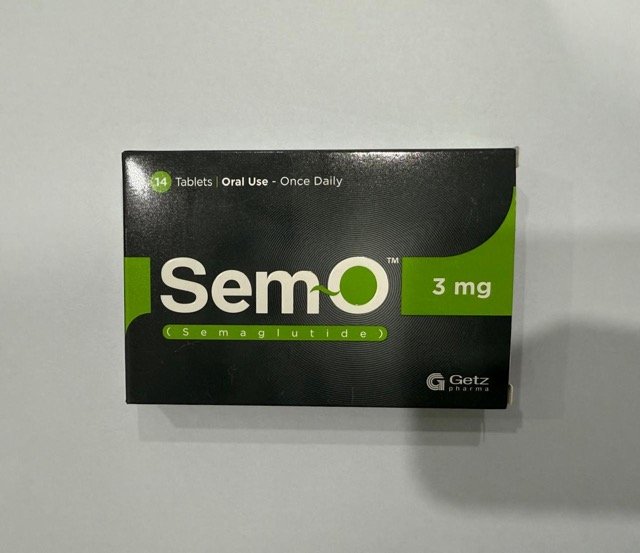Fosaprepitant is a drug used in the prevention of chemotherapy-induced nausea and vomiting (CINV). It is a prodrug of aprepitant, meaning it is converted into aprepitant in the body. Aprepitant works by blocking the action of substance P, a natural substance in the brain that triggers nausea and vomiting. By blocking substance P, fosaprepitant helps prevent chemotherapy-induced nausea and vomiting.
Fosaprepitant is typically administered intravenously (IV) in a clinical setting, often in combination with other anti-nausea medications as part of a regimen to control CINV. It is commonly used in cancer patients undergoing chemotherapy treatments known to cause significant nausea and vomiting.
Fosaprepitant (Emend) is an NK-1 (neurokinin-1) receptor inhibitor that is used in the treatment of acute and delayed onset of chemotherapy-induced vomiting in combination with other antiemetic medications.
Fosaprepitant Uses:
- Prevention of chemotherapy-induced nausea and vomiting:
- used in the initial and follow-up treatments, in conjunction with other antiemetics, in kids under the age of six months to avoid immediate and delayed nausea and vomiting linked to highly emetogenic chemotherapy, especially high-dose cisplatin.
- used to treat individuals 6 months of age or older who are receiving initial and subsequent cycles of mildly emetogenic chemotherapy in order to minimize delayed nausea and vomiting (in conjunction with other antiemetics).
- Limitations of use:
- Fosaprepitant has not been studied for the management of existing vomiting and nausea.
Fosaprepitant (Emend) Dose in Adults
Fosaprepitant (Emend) Dose in the Prevention of chemotherapy-induced nausea/vomiting:
For preventing nausea and vomiting caused by chemotherapy:
- Highly emetogenic chemotherapy: You'll get an IV dose of 150 mg on day 1 only, just before your chemotherapy. Along with this, you'll also receive other medicines like a 5-HT antagonist on day 1 only and dexamethasone from days 1 to 4. The dexamethasone dose will be reduced by half on days 1 and 2.
- Moderately emetogenic chemotherapy: Similar to highly emetogenic chemotherapy, you'll receive an IV dose of 150 mg on day 1 only, just before your chemotherapy. You'll also get other medicines like a 5-HT antagonist and dexamethasone on day 1. Again, the dexamethasone dose will be halved.
Fosaprepitant (Emend) Dose in Children
Fosaprepitant (Emend) Dose in the prevention of Chemotherapy-induced nausea/vomiting;
(For highly and moderately emetogenic chemotherapy)
For the prevention of chemotherapy-induced nausea and vomiting, the dosages of fosaprepitant vary based on age groups:
Infants ≥6 months weighing ≥6 kg and Children <2 years:
- Single-dose regimen: IV dose of 5 mg/kg (up to a maximum of 150 mg) given once, about 90 minutes before chemotherapy on day 1 only. Administer with a 5-HT antagonist with or without corticosteroid.
- Three-day regimen: IV dose of 3 mg/kg (up to a maximum of 115 mg) given once, about 90 minutes before chemotherapy on day 1 only. Followed by oral aprepitant on days 2 and 3. Administer with a 5-HT antagonist with or without corticosteroid.
Children 2 to <12 years:
- Single-dose regimen: IV dose of 4 mg/kg (up to a maximum of 150 mg) given once, about 90 minutes before chemotherapy on day 1 only. Administer with a 5-HT antagonist with or without corticosteroid.
- Three-day regimen: IV dose of 3 mg/kg (up to a maximum of 115 mg) given once, about 90 minutes before chemotherapy on day 1 only. Followed by oral aprepitant on days 2 and 3. Administer with a 5-HT antagonist with or without corticosteroid.
Children ≥12 years and Adolescents ≤17 years:
- Single-dose regimen: IV dose of 150 mg given once, about 60 minutes before chemotherapy on day 1 only. Administer with a 5-HT antagonist with or without corticosteroid.
- Three-day regimen: IV dose of 115 mg given once, about 60 minutes before chemotherapy on day 1 only. Followed by oral aprepitant on days 2 and 3. Administer with a 5-HT antagonist with or without corticosteroid.
Adolescents ≥18 years:
- Single-dose regimen: IV dose of 150 mg given once, about 50 to 60 minutes before chemotherapy on day 1 only. Administer with a 5-HT antagonist and corticosteroid.
Fosaprepitant Pregnancy Category: B
- In animal studies, no adverse events related to reproduction were noted for aprepitant, the active ingredient in fosaprepitant.
- However, it's important to note that the effectiveness of hormonal contraceptives (like birth control pills) may be reduced while taking fosaprepitant or aprepitant.
- Therefore, it's recommended to use alternative or additional methods of contraception both during treatment with fosaprepitant or aprepitant and for at least one month after the last dose to ensure contraception effectiveness.
- This precaution helps to avoid unintended pregnancies while undergoing treatment.
Fosaprepitant use during breastfeeding:
- The presence of fosaprepitant in breast milk is not known.
- Therefore, it's important to consider the potential risk of exposing the infant to the medication when deciding whether to breastfeed during therapy.
- The decision should be made by weighing the benefits of treatment to the mother against the potential risks to the infant.
Fosaprepitant (Emend) Dose in Kidney disease:
The manufacturer's labeling does not include specific dosage adjustments for patients with renal disease. Although there are modest decreases in protein binding of aprepitant, the area under the curve (AUC) of pharmacologically active unbound drug is not significantly affected in patients with renal disease.
- Additionally, it's important to note that aprepitant is not removed by hemodialysis, so no adjustments are necessary for patients undergoing this type of dialysis.
- However, as with any medication, patients with renal impairment should be closely monitored for adverse effects, and dosage adjustments may be necessary based on individual patient factors and clinical judgment.
Fosaprepitant (Emend) Dose in Liver disease:
- For patients with mild or moderate impairment, categorized as Child-Pugh class A or B, no dosage adjustment is deemed necessary for fosaprepitant.
- However, for patients with severe impairment, classified as Child-Pugh class C, there is no specific dosage adjustment recommended in the manufacturer's labeling due to lack of study. Nonetheless, additional monitoring may be warranted in these cases to ensure the medication is well-tolerated and effective.
Common Side Effects of Fosaprepitant (Emend):
- Central nervous system:
- Fatigue
- Gastrointestinal:
- Diarrhea
Less Common Side Effects of Fosaprepitant (Emend):
- Central nervous system:
- Peripheral neuropathy
- Gastrointestinal:
- Dyspepsia
- Genitourinary:
- Urinary tract infection
- Hematologic & oncologic:
- Neutropenia
- Anemia
- Leukopenia
- Local:
- Infusion-site reaction includes
- Induration at injection site
- Local pruritus
- Localized erythema
- Infusion-site pain
- Infusion-site reaction includes
- Neuromuscular & skeletal:
- Weakness
- Limb pain
Contraindications to Fosaprepitant (Emend):
Fosaprepitant is contraindicated in individuals who have a known hypersensitivity to fosaprepitant or any component of the formulation. Additionally, concurrent use with certain medications is also contraindicated:
- Pimozide: Fosaprepitant should not be used concurrently with pimozide, as it may lead to potentially serious interactions.
In Canada, there are additional contraindications not listed in the US labeling. These include concurrent use with:
- Astemizole: A medication used to treat allergies.
- Terfenadine: Another medication used to treat allergies.
- Cisapride: A medication primarily used for gastrointestinal motility disorders.
These contraindications indicate that fosaprepitant should not be used simultaneously with these medications due to the risk of adverse effects or interactions.
Warnings and precautions
Hypersensitivity
- If someone is allergic to fosaprepitant or any part of it, they might have a bad reaction when it's given to them.
- This could include trouble breathing, redness of the skin, feeling hot or flushed, low blood pressure, fainting, or even a severe allergic reaction called anaphylaxis, which can be life-threatening.
- If any of these symptoms happen during the infusion, the infusion should be stopped immediately, and it shouldn't be given again to that person.
Reactions at the infusion site:
- Sometimes, when fosaprepitant is given through a vein, people might have reactions at the infusion site.
- These reactions can include redness, pain, swelling, clotting in the vein, itching, and hardening of the skin around the injection site.
- Serious reactions, like clotting in the vein, inflammation of blood vessels, or tissue death, have happened, especially when fosaprepitant is given with certain chemotherapy drugs known to cause tissue damage if they leak outside the vein.
- Most serious reactions occur during the first three injections and may last for more than two weeks.
- To reduce the risk, fosaprepitant should not be injected into small veins or through a butterfly catheter.
- If a severe reaction happens, the infusion should be stopped, and appropriate treatment should be given.
Hepatic impairment
- For people with liver problems, it's important to be cautious when using fosaprepitant.
- The medication hasn't been studied extensively in individuals with severe liver issues (classified as Child-Pugh class C).
- Therefore, extra care is needed when prescribing fosaprepitant to patients with liver impairment.
Nausea/vomiting:
- Fosaprepitant hasn't been specifically studied for treating nausea and vomiting that's already happening.
- Its main use is for preventing nausea and vomiting before they start, particularly in people undergoing chemotherapy.
- This means it's used as a preventive measure rather than a treatment for nausea and vomiting that's already occurring.
Fosaprepitant: Drug Interaction
|
Risk Factor C (Monitor therapy) |
|
|
ARIPiprazole |
CYP3A4 Inhibitors (Weak) may increase the serum concentration of ARIPiprazole. Management: Monitor for increased aripiprazole pharmacologic effects. Aripiprazole dose adjustments may or may not be required based on concomitant therapy and/or indication. Consult full interaction monograph for specific recommendations. |
|
Bosentan |
May decrease the serum concentration of CYP3A4 Substrates (High risk with Inducers). |
|
Clofazimine |
May increase the serum concentration of CYP3A4 Substrates (High risk with Inhibitors). |
|
CYP3A4 Inducers (Moderate) |
May decrease the serum concentration of CYP3A4 Substrates (High risk with Inducers). |
|
CYP3A4 Substrates (High risk with Inhibitors) |
Fosaprepitant may increase the serum concentration of CYP3A4 Substrates (High risk with Inhibitors). |
|
Deferasirox |
May decrease the serum concentration of CYP3A4 Substrates (High risk with Inducers). |
|
Dofetilide |
CYP3A4 Inhibitors (Weak) may increase the serum concentration of Dofetilide. |
|
Erdafitinib |
May decrease the serum concentration of CYP3A4 Substrates (High risk with Inducers). |
|
Erdafitinib |
May increase the serum concentration of CYP3A4 Substrates (High risk with Inhibitors). |
|
Flibanserin |
CYP3A4 Inhibitors (Weak) may increase the serum concentration of Flibanserin. |
|
Ifosfamide |
Fosaprepitant may increase the serum concentration of Ifosfamide. Specifically, concentrations of the toxic metabolites of ifosfamide may increase. |
|
Ivosidenib |
May decrease the serum concentration of CYP3A4 Substrates (High risk with Inducers). |
|
Larotrectinib |
May increase the serum concentration of CYP3A4 Substrates (High risk with Inhibitors). |
|
NiMODipine |
CYP3A4 Inhibitors (Weak) may increase the serum concentration of NiMODipine. |
|
Palbociclib |
May increase the serum concentration of CYP3A4 Substrates (High risk with Inhibitors). |
|
PARoxetine |
May decrease serum concentrations of the active metabolite(s) of Fosaprepitant. Fosaprepitant may decrease the serum concentration of PARoxetine. |
|
Sarilumab |
May decrease the serum concentration of CYP3A4 Substrates (High risk with Inducers). |
|
Siltuximab |
May decrease the serum concentration of CYP3A4 Substrates (High risk with Inducers). |
|
Simeprevir |
May increase the serum concentration of CYP3A4 Substrates (High risk with Inhibitors). |
|
Tocilizumab |
May decrease the serum concentration of CYP3A4 Substrates (High risk with Inducers). |
|
TOLBUTamide |
Fosaprepitant may decrease the serum concentration of TOLBUTamide. |
|
Warfarin |
Fosaprepitant may decrease the serum concentration of Warfarin. The active metabolite aprepitant is likely responsible for this effect. |
|
Risk Factor D (Consider therapy modification) |
|
|
Corticosteroids (Systemic) |
Fosaprepitant may increase the serum concentration of Corticosteroids (Systemic). The active metabolite aprepitant is likely responsible for this effect. |
|
Dabrafenib |
May decrease the serum concentration of CYP3A4 Substrates (High risk with Inducers). Management: Seek alternatives to the CYP3A4 substrate when possible. If concomitant therapy cannot be avoided, monitor clinical effects of the substrate closely (particularly therapeutic effects). |
|
Estrogen Derivatives (Contraceptive) |
Fosaprepitant may decrease the serum concentration of Estrogen Derivatives (Contraceptive). The active metabolite aprepitant is likely responsible for this effect. Management: Alternative or additional methods of contraception should be used both during treatment with fosaprepitant or aprepitant and for at least one month following the last fosaprepitant/aprepitant dose. |
|
Lomitapide |
CYP3A4 Inhibitors (Weak) may increase the serum concentration of Lomitapide. Management: Patients on lomitapide 5 mg/day may continue that dose. Patients taking lomitapide 10 mg/day or more should decrease the lomitapide dose by half. The lomitapide dose may then be titrated up to a max adult dose of 30 mg/day. |
|
Lorlatinib |
may lower the serum level of CYP3A4 substrates. (High risk with Inducers). Management: Avoid using lorlatinib at the same time as any CYP3A4 substrates for which even a small drop in blood levels of the substrate might result in therapeutic failure and negative clinical outcomes. |
|
Pitolisant |
may lower the serum level of CYP3A4 substrates. (High risk with Inducers). Management: Pitolisant should not be used in conjunction with a CYP3A4 substrate that has a limited therapeutic index. When administered with pitolisant, other CYP3A4 substrates need to be checked more carefully. |
|
Progestins (Contraceptive) |
Fosaprepitant may decrease the serum concentration of Progestins (Contraceptive). The active metabolite aprepitant is likely responsible for this effect. Management: Alternative or additional methods of contraception should be used both during treatment with aprepitant or fosaprepitant and for at least one month following the last aprepitant/fosaprepitant dose. |
|
St John's Wort |
May decrease the serum concentration of CYP3A4 Substrates (High risk with Inducers). Management: Consider an alternative for one of the interacting drugs. Some combinations may be specifically contraindicated. Consult appropriate manufacturer labeling. |
|
Stiripentol |
May increase the serum concentration of CYP3A4 Substrates (High risk with Inhibitors). Management: Use of stiripentol with CYP3A4 substrates that are considered to have a narrow therapeutic index should be avoided due to the increased risk for adverse effects and toxicity. Any CYP3A4 substrate used with stiripentol requires closer monitoring. |
|
Risk Factor X (Avoid combination) |
|
|
Astemizole |
Fosaprepitant may increase the serum concentration of Astemizole. The active metabolite aprepitant is likely responsible for this effect. |
|
Cisapride |
Fosaprepitant may increase the serum concentration of Cisapride. The active metabolite aprepitant is likely responsible for this effect. |
|
Conivaptan |
May increase the serum concentration of CYP3A4 Substrates (High risk with Inhibitors). |
|
CYP3A4 Inducers (Strong) |
May decrease the serum concentration of Fosaprepitant. Specifically, CYP3A4 Inducers (Strong) may decrease serum concentrations of the active metabolite aprepitant. |
|
CYP3A4 Inhibitors (Moderate) |
May increase the serum concentration of Fosaprepitant. |
|
CYP3A4 Inhibitors (Strong) |
May increase the serum concentration of Fosaprepitant. |
|
Fusidic Acid (Systemic) |
May increase the serum concentration of CYP3A4 Substrates (High risk with Inhibitors). |
|
Idelalisib |
May increase the serum concentration of CYP3A4 Substrates (High risk with Inhibitors). |
|
Pimozide |
Fosaprepitant may increase the serum concentration of Pimozide. The active metabolite aprepitant is likely responsible for this effect. |
|
Terfenadine |
Fosaprepitant may increase the serum concentration of Terfenadine. The active metabolite aprepitant is likely responsible for this effect. |
Monitoring parameters:
Monitoring for Warfarin Interaction:
- For patients taking warfarin regularly, their INR (International Normalized Ratio) should be monitored closely in the two weeks following fosaprepitant administration.
- Pay particular attention to INR levels around 7 to 10 days after receiving fosaprepitant.
Monitoring for Adverse Reactions:
- Keep an eye out for any signs or symptoms of hypersensitivity reactions, such as difficulty breathing, skin redness or rash, feeling faint, or swelling of the face or throat.
- Also, monitor for any reactions at the infusion site, like redness, pain, swelling, or hardening of the skin around the injection site.
How to administer Fosaprepitant (Emend)?
IV Administration Instructions:
- Timing: Administer fosaprepitant as an intravenous (IV) infusion approximately 30 minutes before starting chemotherapy.
- Infusion Rate: Infuse the medication over a period of 20 to 30 minutes. It's important not to rush the infusion process.
- Precautions: Ensure that the infusion is completed prior to the initiation of chemotherapy to allow the medication to take effect.
- Additional Information: These administration guidelines are specific to fosaprepitant (Emend IV). Refer to the aprepitant monograph for information regarding the administration of IV aprepitant (Cinvanti).
Mechanism of action of Fosaprepitant (Emend):
- Fosaprepitant is a medication that turns into another substance called aprepitant once it's in the body.
- Aprepitant works by blocking a specific receptor called the substance P/neurokinin 1 (NK1) receptor.
- This helps to stop both immediate and delayed vomiting by preventing the receptor from getting activated.
- Additionally, it boosts the effectiveness of other anti-nausea medications, like serotonin receptor antagonists, and corticosteroids.
- Overall, fosaprepitant helps to reduce vomiting caused by chemotherapy.
Distribution:
- Aprepitant Volume: About 70 liters in the body and can cross into the brain through the blood-brain barrier.
Protein Binding:
- Aprepitant: More than 95% of the medication binds to proteins in the blood.
Metabolism:
- Fosaprepitant: It's primarily processed in the liver and some other body tissues. It quickly changes into aprepitant within 30 minutes after the infusion ends.
- Aprepitant: In the liver, mainly by an enzyme called CYP3A4, with some contribution from other enzymes like CYP1A2 and CYP2C19. It creates 7 less active byproducts.
Half-Life Elimination:
- Aprepitant: It takes about 9 to 13 hours for half of the medication to leave the body.
Time to Peak, Plasma:
- Fosaprepitant becomes aprepitant within 30 minutes after the infusion ends.
Excretion:
- A mix of about 57% goes out through urine and 45% through feces.Top of Form
International Brand Names of Fosaprepitant:
- Apritant IV
- Emend IV
- Ivemend
- Pranitand
- Emend
- Prevenausia
- Proemend
Fosaprepitant Brand Names in Pakistan:
Not available.



.jpeg)



